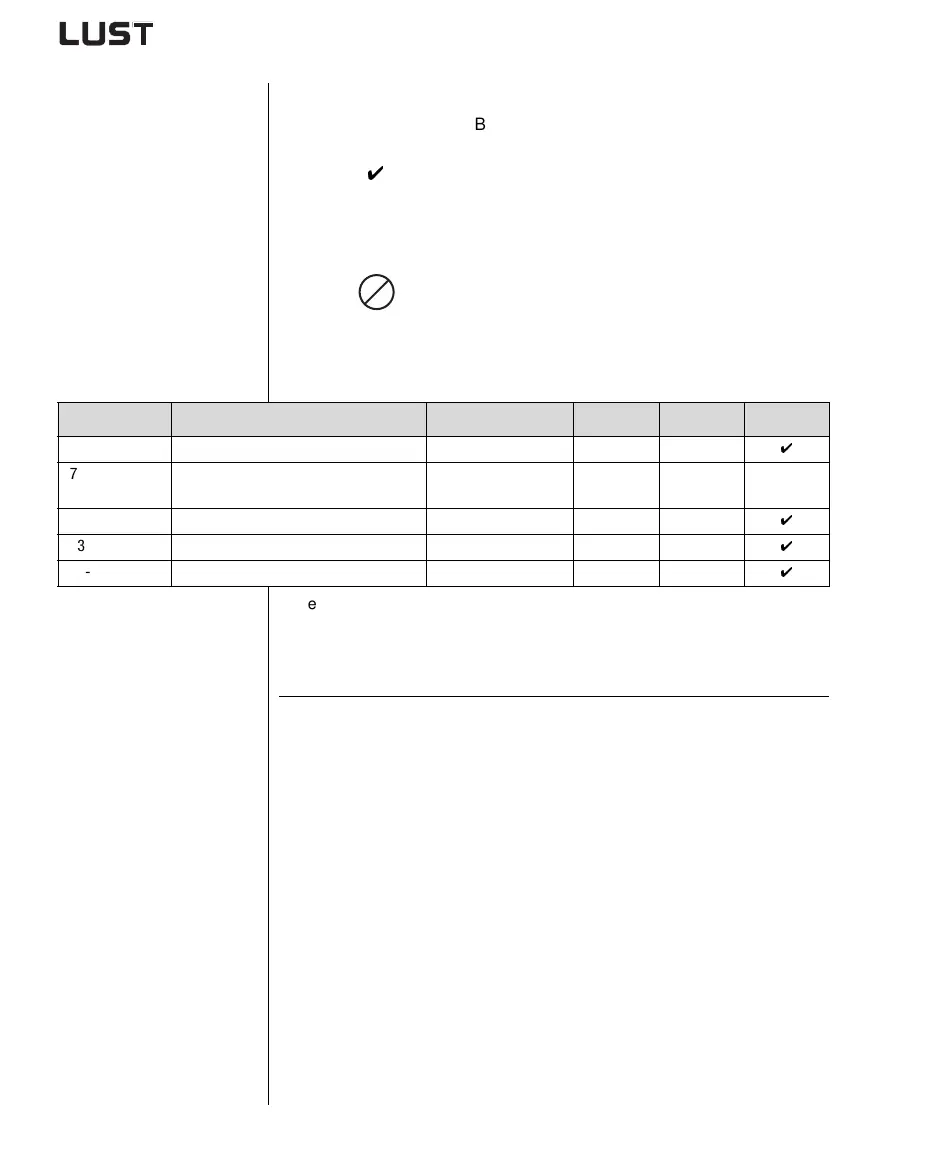5-118
Application Manual CDA3000
5 Software functions
Application with differing motor types:
Parameters for DC braking
• Asynchronous
motor:
Braking time longer than braking with stop
ramp, but no braking resistor necessary for
inverter module.
• Synchronous
motor, reluctance
motor:
No braking effect, because at high speeds the
sum total of the braking torques per revolution is
virtually zero (due to the rotor design). The
resulting regenerative operation may lead to
error messages.
Parameter Function Value range FS Unit Online
670-BRDC Mode of actuation of DC braking OFF ... STOP OFF
671-BRDCC Braking current for DC braking referred to
device rated current
0 ... 180 80 %
672-BRTMX Maximum braking time 0 ... 60 15 s
673-BRTOF Demagnetization time before DC braking 0.10 ... 10.00 2 s
674-BRTMN Minimum braking time 0 ... 65535 0 ms
Table 5.74 Parameters from subject area _67BR DC braking
Explanatory notes
• Depending on parameter setting, the motor may either run down
uncontrolled, or be decelerated with a stop ramp or with direct
current.
• After DC braking, the DC holding function can be appended to
counteract any rotation caused by the load on the motor.
• The braking power is reduced to approx. one third of the braking
power in operation with a braking resistor (braking chopper opera-
tion).
• The minimum braking time (674-BRTMN) cannot be aborted by a
start signal.
• In the time between the minimum braking time (674-BRTMN) and
the maximum braking time (672-BRTMX) the DC braking can be
aborted by a start signal.
• The maximum braking time period (672-BRTMX) includes the
minimum braking time (674-BRTMN).

